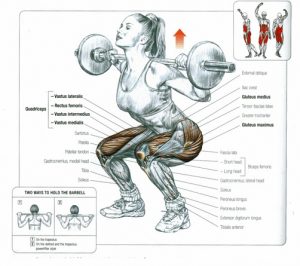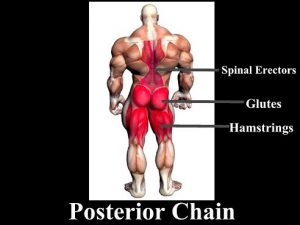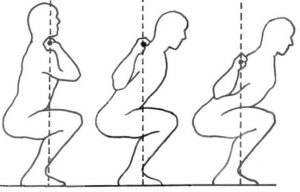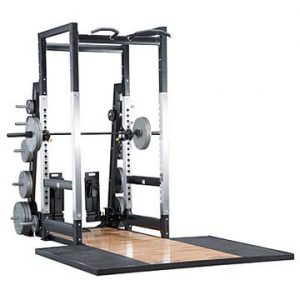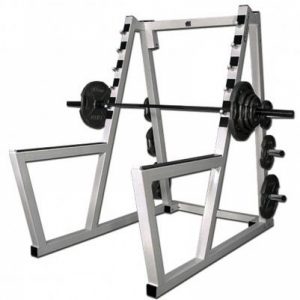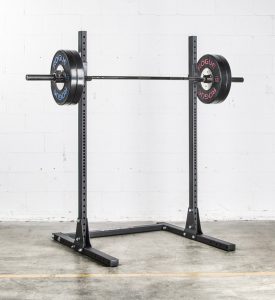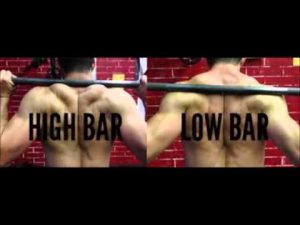I read a Nerd Fitness article and I learned good stuff.
Click here to read the Part 1
Barbell Squat
I know 3 types of squat and this is the best known : the high bar back (also named « Olympic Squat » or « Oly Squat »), the low bar back squat and the front squat. Maybe there are others but I’ll talk about the best known.
The difference is how you place the barbell.
Depending on how you place the barbell on your body, this will modify the squat’s mechanism and geometry. Which means that you will use your muscles slightly differently depending on how you place the barbell.
-
The Low Bar Back is a posterior chain dominant squat
-
The High Bar Back and Front Squat are a quad dominant squat.
Here a diagram form the book « Starting Strength » to better visualize the barbell’s placement.
Don’t worry, these 3 squat’s type work the same basic muscles. As you know each exercise has its variants. Now, you know the 3 variants of squat.
Go, find in your gym a squat rack, a power cage or a squat stand and place the barbell at the height of your clavicle. If you can’t do this and the height is too low or too high, choose the too low. I have never seen anyone lift on toe and with heavyweight, the accident is guaranteed.
As you read in my articles « Know how much weight to lift (Part 1 et Part 2) » [url link], it’s important to do a warm up with the barbell without weight. I don’t want to know how much you want to lift, do some sets with the barbell without weight to prepare your muscles and joints.
Low bar back squat
It’s the most popular squat’s type for beginners, general lifters and powerlifters. It’s also the squat’s type taught in the book « Starting Strength », one of the best book for beginners.
Once you have adjusted the barbell’s height, be in front of the barbell. Take a step to be under the barbell and grab it with your hands. For this squat’s type, you’ll use a thumbless grip so that your wrists aligned with your forearms.
Usually the grip’s width is near of the shoulders to create a meaty shelf to place the barbell on the muscles in our upper back (deltoid posterior). If you aren’t comfortable, you can have a wider grip. And with time, when you have more flexibility, you can have a grip near of your shoulders.
Here is the difference between a « wrapped grip » (left) and « thumbless grip » (right) :
Once the barbell is on your back, stand up, contract your core (squeeze butt and abs) and step back. Normally, if you followed instructions well, you can only step backward. If you can take a step forward, you’re in the wrong direction.
This squat’s type is a posterior chain dominant squat and you’ll be able to lift heavier that the 2 others squat’s type.
High bar back squat
For this type of squat, you’ll start the same way but you’ll put your thumble around the barbell. This isn’t a thumbless grip.
The grip’s width is near of the shoulders to create a meaty shelf to place the barbell on the muscles in our upper back (deltoid posterior) like for the low bar back squat.
If you lack of flexibility to have a narrow grip, you can place the barbell 5cm (2inches) higher on your trapezius instead on your posterior deltoid. Which means that the barbell is placed almost on your shoulders.
Look the difference between a high bar back squat (left) and a low bar back squat (right) :
Attention : the barbell placed almost on your shoulders and not on your spine. If you feel the barbell touching your spine, it’s too high and this can cause serious damage.
Place the barbell on your back and take a step back. Stabilize and tighten your core and squat down.
To do this squat version well, you need to keep your torso more upright. If you had difficulties to keep your torso upright with the bodyweight squat, it will be a little be more difficult here.
You can try, there is no problem but lift lightweight until you do it well to correct yourself. It would be a pity if your torso collapses and the barbell rolls on your neck (avoid this pain, really).
Front squat
For this squat’s type, you need to place the barbell in front of your shoulders. This squat’s type is quad dominant so you have to be able to keep your torso even higher than the high bar back squat.
Instead of stepping under the barbell, you place the barbell in font of you on your shoulder. To grip the barbell, it’s a little bit more complicated because you need to have mobility and flexibility in your wrists.
Front squat is done with a full grip around the barbell like the other 2 squat types but most people let the barbell roll on their fingertips (a three finger grip is enough). If you like’re me, you don’t manage to have 3 finders around the barbell, there are 2 variants :
-
Genie front squat (I do this one).
Keep your hands to hold the barbell (if not the 3 fingertips is enough) and keep your shoulders high so that your upper arms are parallel to the floor. And squat down.
It’s important that you keep your shoulder as high as possible during the front squat. When you’re gonna squat down, you’re gonna feel the weight on your arms and it will probably correct your position, drop the weight otherwise you will hurt yourself.
What squat do ?
This is an excellent question. You’ll meet 2 clans that clash in the gyms : high bar back squat VS low bar back squat. Both clans have good arguments but that doesn’t help you make a choice.
The truth, test the 3 types and look with which you feel most comfortable, which you have the best technique and with which you can squat down the lowest (your hips joints lower than your knees). Once you have well studied and tested the 3 types of squat, you’ll find your type of squat.
Share this article if you think it can help someone you know. Thank you.
-Steph
